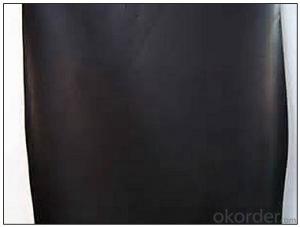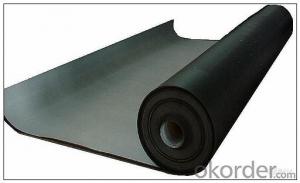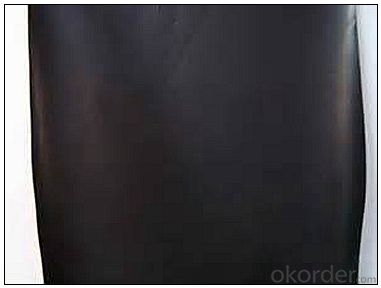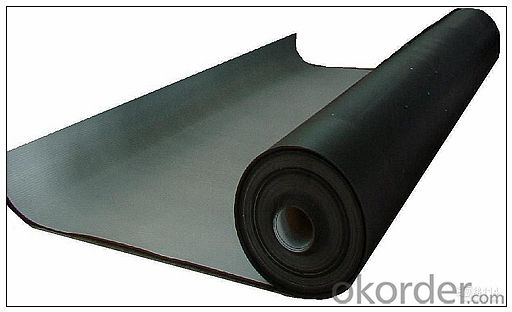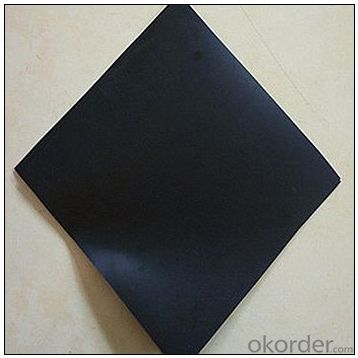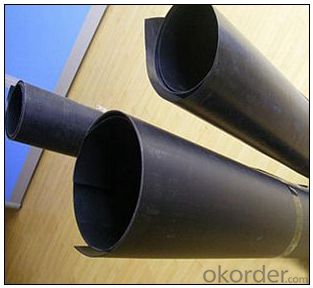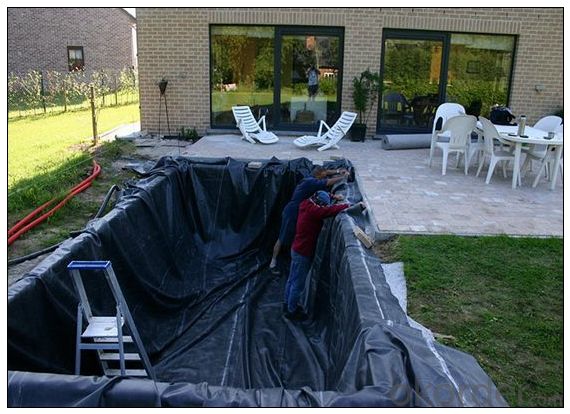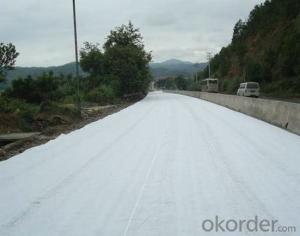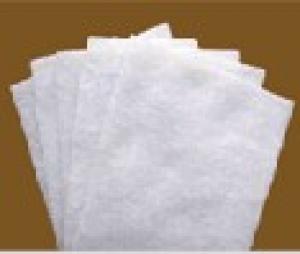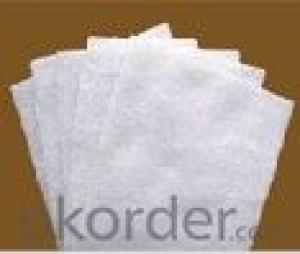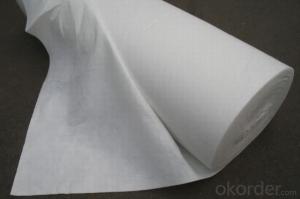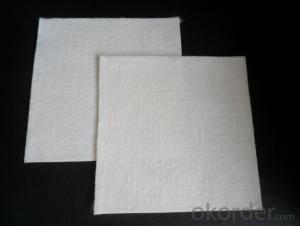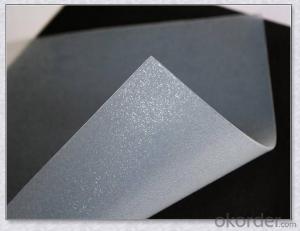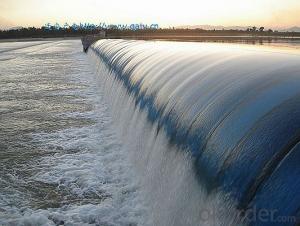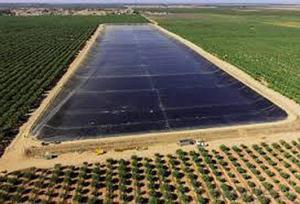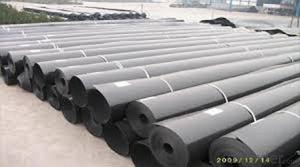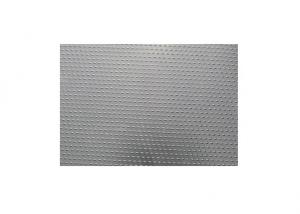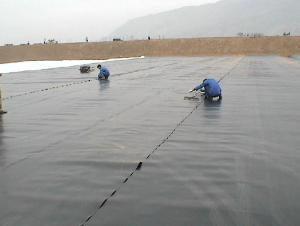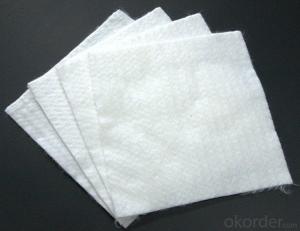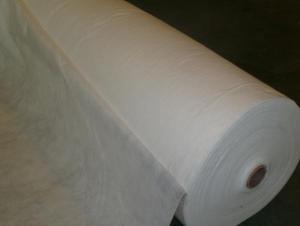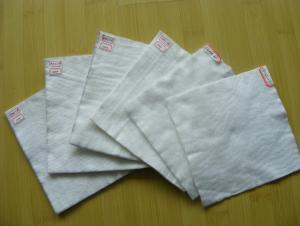Polyethylene HDPE Polyvinyl Chloride Geomembrane with Geotextile Fabric Mesh
- Loading Port:
- China main port
- Payment Terms:
- TT OR LC
- Min Order Qty:
- 1000 m²
- Supply Capability:
- 1000000 m²/month
OKorder Service Pledge
OKorder Financial Service
You Might Also Like
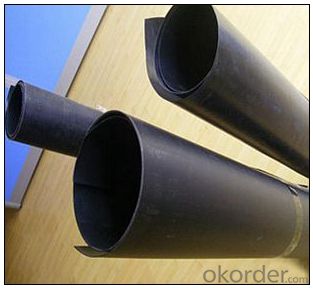
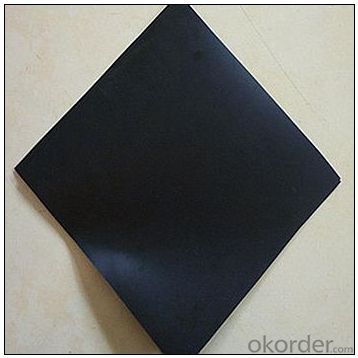
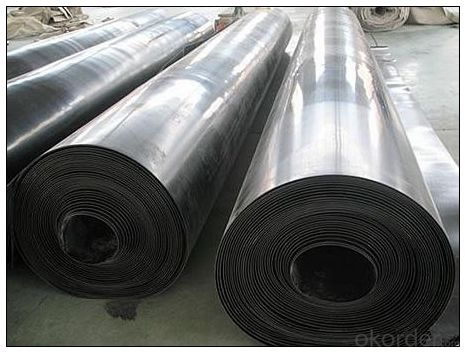
Type:
Waterproof Membrane
Place of Origin:
Shandong, China (Mainland)
Brand Name:
CMAX
Model Number:
ISO
Sample:
Available
Color:
customized
width:
4m-9m
thickness:
1mm-3mm
length:
customized
material:
geotextile+HDPE membrane/geote
Classified by Material
1. HDPE Geomembrane
2. LDPE Geomembrane
3. LLDPE Geomembrane
Technical specifications of HDPE geomembrane:
a) Density ≥ 0.94g/m2
b) Tensile Strength ≥25Mpa
c) Elongation at Break ≥ 550%
d) Right-angled Tear ≥ 110N/mm
e.)Puncture Strength ≥ 550N
f.) Permeability Coefficient ≤1.0xe-13g.cm/(cm2.S.Pa)
g.) -70oC Low Temperature Impact Brittle Property: good.
h.) Chemical Resistance: at 80oC, marinated in 5g/L Nacl for a long time, it will not erode or swell.
Packaging & Shipping
Packing: PLASTIC FILM INSIDE, AND WOVEN BAG OUTSIDE
Shipping: About 15 days after receipt the deposit
Our Service
Quality assurance
1.On a regular basis or as per your request,we entrust national testing agencies to conduct quality inspections
2. Strictly in accordance with the ISO9001-2008 international quality system standard,we monitor and manage the whole process throughout production,quality testing,and measurement to ensure product quality
3. For quality-related construction delay or substandard construction(except for damage or losses due to customer’s responsibility or irresistible natural disasters),we have refunding,replacement,and repair services.We will respond to customers’ feedbacks on quality issues within 24 hours.
After-sales service
1.In order to provide customers with comprehensive technical support,we will provide technical and other related information upon request in a timely manner.
2.In required,we will appoint specialized technicians to the construction site to give technical trainings to construction people,and offer technical guidance throughout the whole construction process.
3.For damage due to shipment and delivery,after we receive the complaint,we will check the issure through provided pictures and videos.If our responsibility is confirmed,we wil offer free replacement.
4.When the construction is completed,as your request,our technical staff may participate in the final acceptance.
FAQ:
Q: What kind of payments does jenor support?
A: T/T, L/C, Cash are accepted.
Q: Do you charge for the samples?
A: Accordeing to our company policy, the samples are free, we only charge the freight fee. And we will return the freight fee during the next order.
Q: Can you produce according to customers' design?
A: Sure, we are professional manufacturer, OEM and ODM are both welcome.
Q: Do you have other products?
A: Yes, please check the pictures:
- Q: How do geotextiles help with sediment control in water bodies?
- Geotextiles help with sediment control in water bodies by acting as a physical barrier that prevents sediment from entering the water. The geotextiles are installed in strategic locations, such as along shorelines or in drainage areas, where they intercept and filter sediment-laden water. They allow water to pass through while trapping the sediment particles, thereby reducing the amount of sediment that reaches the water body. This helps to improve water quality, prevent erosion, and maintain the ecological balance of the water ecosystem.
- Q: Can geotextiles be used for erosion control in agricultural fields?
- Yes, geotextiles can be used for erosion control in agricultural fields.
- Q: Can geotextiles be used in mine tailings dam construction?
- Yes, geotextiles can be used in mine tailings dam construction. Geotextiles are often employed as a barrier or separator between the tailings material and the underlying soil to prevent erosion, enhance stability, and improve drainage in the dam. They can offer significant benefits in terms of reducing seepage, increasing dam strength, and promoting environmental sustainability in mine tailings management.
- Q: Are geotextiles resistant to earthquakes?
- No, geotextiles are not inherently resistant to earthquakes. They are primarily used for erosion control, soil stabilization, and filtration purposes. While they can provide some reinforcement to the soil, their main function is not to withstand seismic activity.
- Q: Geotextile types and role of geotextiles which types, respectively, what role, filament geotextile, short geotextile, composite geotextile, respectively, what role? More
- 1, acupuncture non-woven geotextile, specifications 100g / m2-1000g / m2 between any choice, the main raw material is the use of polyester staple fiber or polypropylene staple fiber, made by acupuncture, the main purposes are: river, sea, lake Embankment slope protection, reclamation, wharf, ship lock flood control and other projects, is through the filter to play a soil and water conservation and effective way to prevent piping. Second, acupuncture non-woven fabrics and PE film composite geotextile, specifications have a cloth a film, two cloth a film, the largest width of 4.2 meters The main raw material is to use polyester staple fiber acupuncture non-woven, PE film through the composite , The main purpose is anti-seepage, apply to railways, highways, tunnels, subways, airports and other projects. Third, non-woven and woven composite geotextile, a variety of non-woven and polypropylene filament woven composite, non-woven and plastic woven composite, for the basis of reinforcement, adjust the permeability coefficient of the basic engineering facilities. Features: light weight, low cost, corrosion resistance, with a filter, drainage, isolation, enhance the excellent performance. Use: widely used in water conservancy, electricity, mines, roads and railways and other geotechnical projects: l, soil separation of the filter material; 2, reservoirs, mine mineral processing of drainage materials, high-rise building drainage materials; Of the anti-erosion material; geotextile features 1, high strength, due to the use of plastic fibers, in dry and wet state can maintain sufficient strength and elongation. 2, corrosion-resistant, in different pH of the soil and water can be long-term corrosion resistance. 3, good water permeability between the fiber gap, it has a good water permeability. 4, good microbial resistance to micro-organisms, insects are not damaged. 5, construction convenience
- Q: Can geotextiles be used in soil erosion control on construction sites?
- Yes, geotextiles can be used in soil erosion control on construction sites. Geotextiles act as a barrier that prevents soil erosion by stabilizing the soil and allowing water to drain through while retaining sediment. They are commonly used in construction projects to protect slopes, control sediment runoff, and promote vegetation growth, thereby reducing the risk of soil erosion on construction sites.
- Q: How do geotextiles affect air quality?
- Geotextiles do not directly impact air quality as they are primarily used for soil reinforcement, filtration, and drainage purposes in construction and landscaping projects. However, their use can indirectly contribute to better air quality by reducing soil erosion, preventing the release of dust particles into the air, and improving overall environmental sustainability.
- Q: What are the factors to consider when specifying geotextiles?
- When specifying geotextiles, it is important to consider factors such as the type and purpose of the project, the desired functions of the geotextiles (filtration, separation, reinforcement, etc.), the site conditions, the expected loads and stresses, the required durability and longevity, the installation and maintenance requirements, and the cost-effectiveness of different geotextile options.
- Q: Can geotextiles be used in retaining wall drainage systems?
- Yes, geotextiles can be used in retaining wall drainage systems. Geotextiles are commonly used as a filter fabric to prevent the migration of fine particles into the drainage system, while allowing water to flow through. By placing geotextiles behind the retaining wall, they help to enhance the drainage efficiency and overall stability of the system.
- Q: What are the different geotextile weight classes and their applications?
- Geotextile weight classes range from light to heavy, with each class having specific applications. Lightweight geotextiles are typically used for erosion control, landscape projects, and separation of materials. Medium weight geotextiles are commonly used for filtration, drainage, and reinforcement purposes. Heavyweight geotextiles are suitable for projects that require strong stabilization, such as road construction, embankment reinforcement, and landfill capping.
Send your message to us
Polyethylene HDPE Polyvinyl Chloride Geomembrane with Geotextile Fabric Mesh
- Loading Port:
- China main port
- Payment Terms:
- TT OR LC
- Min Order Qty:
- 1000 m²
- Supply Capability:
- 1000000 m²/month
OKorder Service Pledge
OKorder Financial Service
Similar products
Hot products
Hot Searches
Related keywords
